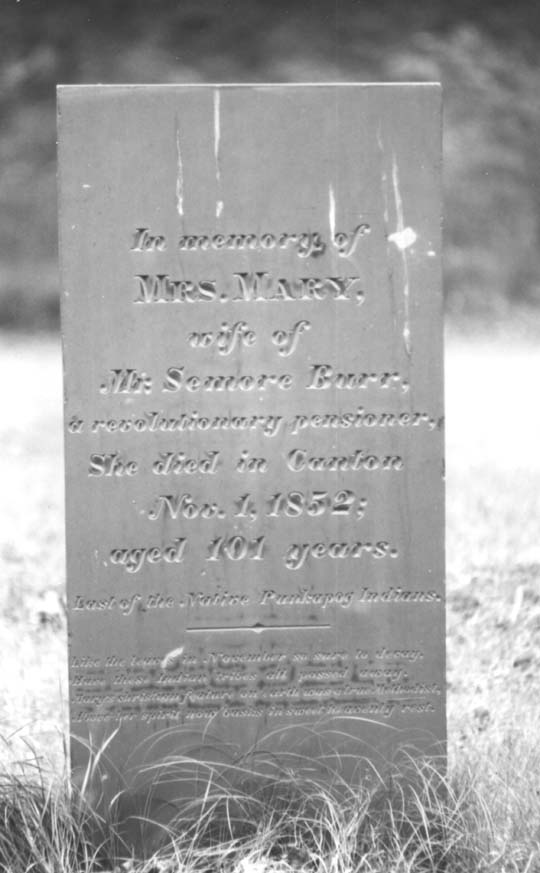
Canton
Massachusetts
Historical Society

Ponkapoags Loved First Minister And His Wife
The Rev. Joseph Morse and his wife Amity were well loved by the Ponkapoag Indians, who appreciated the couple’s efforts to educate them and bring them spiritual comfort. Rev. Morse, the first minister in the Town, started preaching here in 1707 and was ordained pastor of the First Parish Church in 1717. He and his wife had been much inspired by the work done among the Indians by John Eliot and his son. They wanted to benefit the Indians too and soon their home became a favorite gathering place for the "poor Indian who desired spiritual light for himself or education for his children."
As Huntoon describes it. "Around Mr. Morse’s capacious fireplace they were pleased to meet and hear his kindly words. He instilled into their untutored minds the principle of the Golden Rule; and though it was beyond hi power to prevent natural stock from wasting away, yet he could inculcate into their hearts the principles of the faith he held. Nor were the Indians ungrateful; for in June, 1710, they gave to Mr. Morse a certain tract of land containing thirty-five acres, for the purpose of encouraging him to preach the word of God among them, and to visit them in their sickness and pray with them."
Later the Indians included this tract of land in some they let out to Gilbert Endicott, "whose son built upon the land, and was then in possession of it." To rectify the error, the Indians petitioned the General Court for permission to grant another section of land to the Morses and the Court ruled favorably. The new grant consisted of 116 acres;.
It is interesting to note that in the petition the Indians praised Mrs. Morse as well as her husband. They said, "Mrs. Amity Morse did keep our Indian School for some very considerable time, till sickness came and broke up the school. She taught diverse of our children the English primer and psalter and testament, and brought them forward in the English tongue."
Ponkapoag Indians
In 1674 Captain Daniel Gookin wrote a book entitled, "The Historical Collections of the Indians of New England". He gave a graphic and interesting account of the Indians, their government, manners, religion, and customs. The book remained in manuscript until it was published by the Massachusetts Historical Society in 1792.
Captain Gookin was a magistrate and superintendent of all the Indians and was in constant touch with them. He mentions holding a court at "Packemit" or "Punquapauge", which he describes as the "Second Praying Town". He was referring, of course, to what we call "Ponkapoag", at that time consisting of an Indian population of only sixty, or 12 families. "Here they worship God and keep the Sabbath in the same manner as is done in Natick," wrote Captain Gookin. "They have a ruler, a constable, and a scholmaster."
These praying Indians were very useful to the early white settlers who came to live in the Ponkapoag Plantation. Huntoon reports, in his "History of Canton", that the Indians helped the settlers to build their houses, helped with the planting and harvesting, and "the more industrious earned money by cutting and preparing cedar shingles for the Boston market." Some of them caught fish to use for barter with their English neighbors. Their friendliness was undoubtedly the result of the kindness shown to their race in former years by the apostle John Eliot and his son. They did not forget, for example, that when they had been cheated and deprived of their lands at Neponset Mills, the Rev. Eliot had petitioned the town of Dorchester to let these Indians settle at Ponkapoag and be "gospelized".